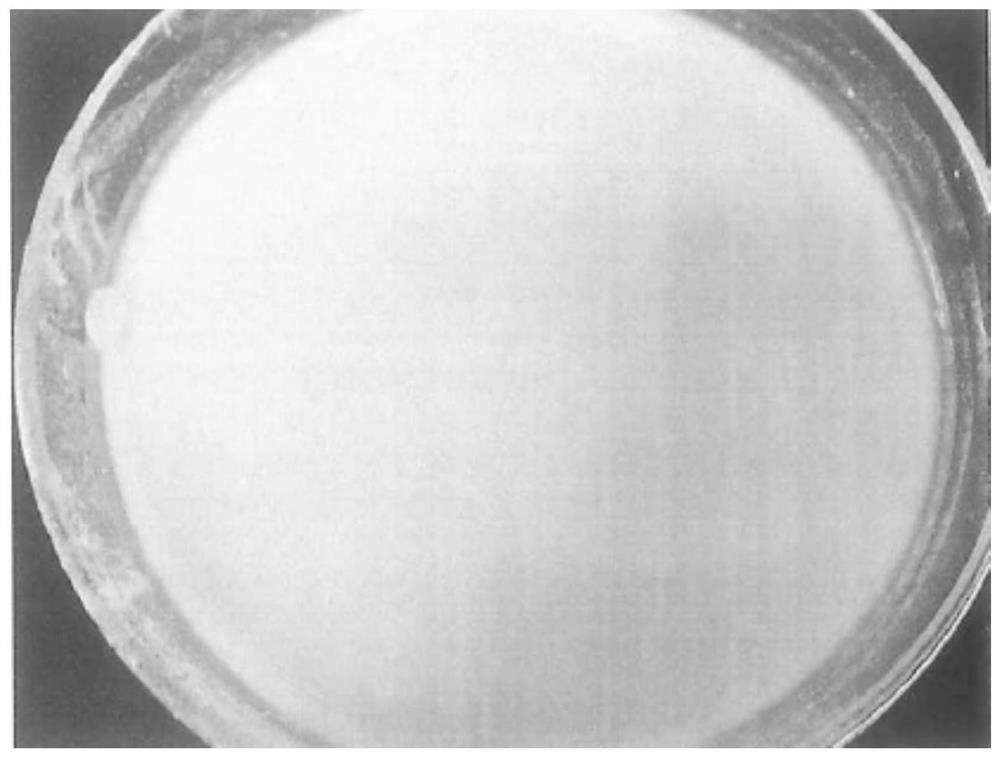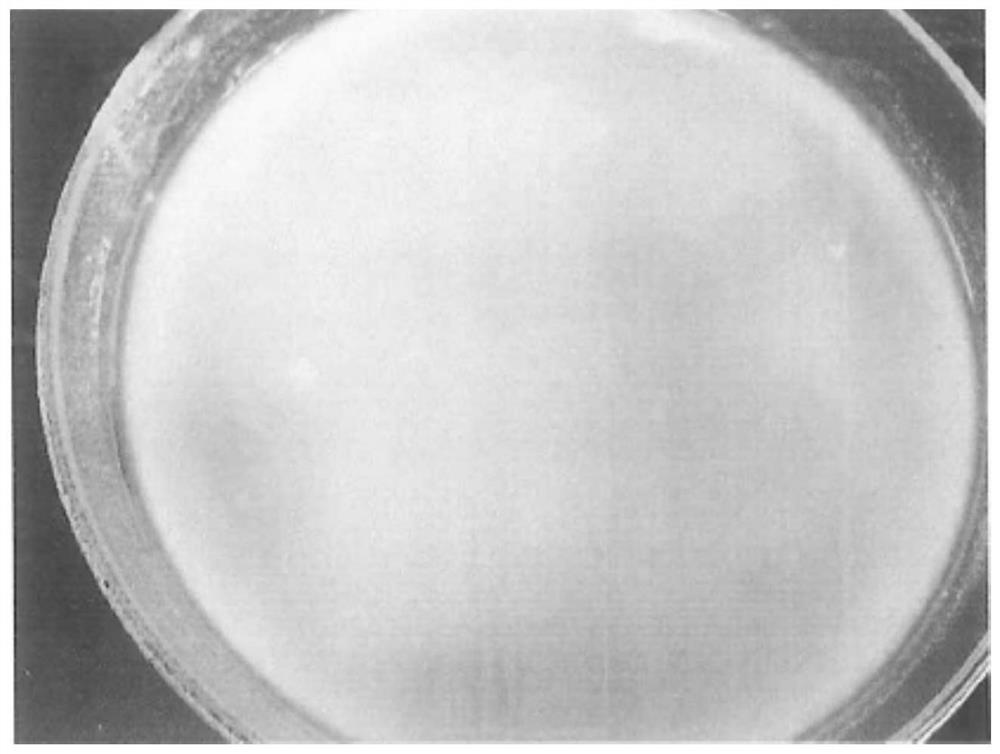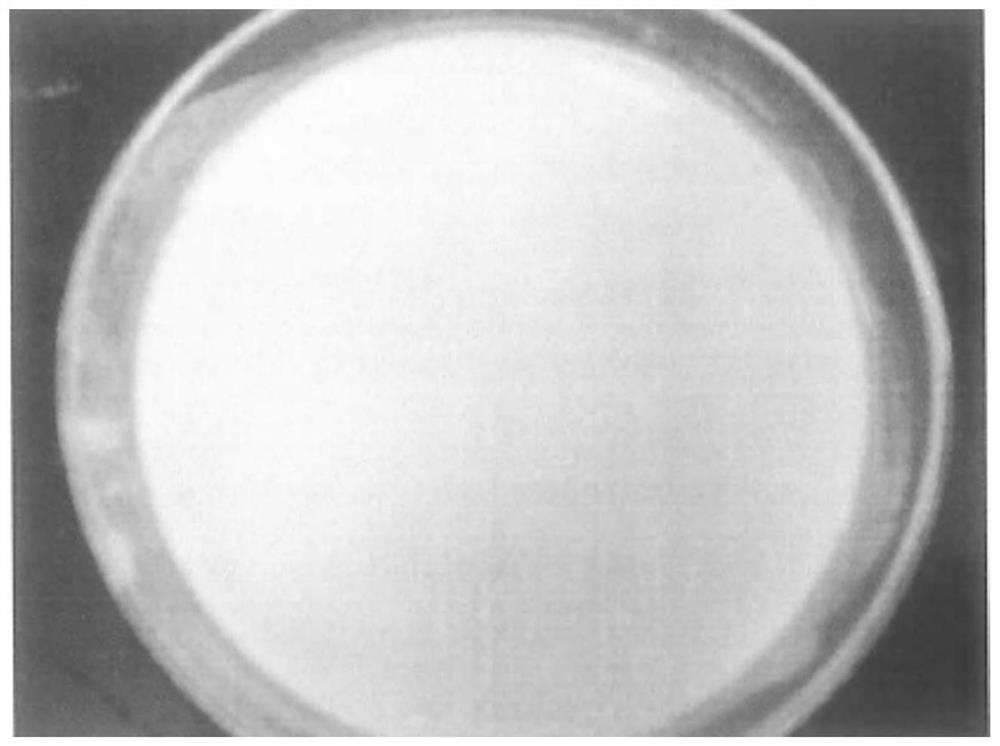Toothpaste for resisting helicobacter pylori in oral cavity
A Helicobacter pylori and toothpaste technology, applied in the field of oral Helicobacter pylori toothpaste, can solve the problems of limited anti-Helicobacter pylori effect, reduced storage performance of toothpaste, and unacceptable odor, so as to avoid the problem of precipitation and stratification and improve dissolution performance and increase the storage time
- Summary
- Abstract
- Description
- Claims
- Application Information
AI Technical Summary
Problems solved by technology
Method used
Image
Examples
Embodiment 1~3
[0036] Examples 1~3 Anti-oral Helicobacter pylori toothpaste samples 1~3
[0037] Prepare toothpaste according to the following steps:
[0038] 1) First add sorbitol and glycerin (humectant) to the vacuum ointment machine, then add microcrystalline cellulose and carrageenan as thickeners and mix thoroughly, then add most of the deionized water, and mix again. Under stirring, add xylitol and sucralose dispersed and dissolved in a small part of deionized water as taste modifiers, effective components and precipitated silica (friction agent), sodium lauroyl sarcosinate (as hair Foaming agent);
[0039] 2) Under vacuum, stir the paste obtained in step 1) at high speed to fully mix, and finally add flavor, and again under vacuum, perform high speed stirring to fully emulsify and mix to obtain precipitated silica toothpaste sample 1 ~3.
[0040] The formulations of the raw materials used in Examples 1 to 3 are shown in Table 1.
[0041] Table 1
[0042]
[0043]
Embodiment 4
[0048] Example 4 Bacteriostatic test of toothpaste samples 1~3 and D1~2
[0049] According to a study by the American Dental Association, the appropriate time for a person to fully brush their teeth is 3-5 minutes, and 3 minutes and 5 minutes are respectively selected as the time points for the experiment. Usually the single use amount of toothpaste is 3-5g, and 3g toothpaste is selected as the experimental condition.
[0050] The bacterial concentration of the experimental group is 5.1*10 5 The CFU / mL bacterial solution was mixed with 3g toothpaste samples 1 to 3 for experiments, and the bacteriostasis rate and natural mortality were measured after 3min and 5min treatments.
[0051] The bacterial liquid is Helicobacter pylori, Porphyromonas gingivalis, and Streptococcus mutans bacterial liquid.
[0052] In addition, a control group was set up. The treatment group without toothpaste samples 1 to 3 was used as the first control group; the toothpaste D1 to D2 obtained by coating the com...
Embodiment 5
[0063] Example 5 Antibacterial duration test of toothpaste samples 1~3 and D1~2
[0064] Take 10 mL of the prepared Helicobacter pylori suspension in Example 4, mix them with 250 mL of the prepared Helicobacter pylori culture medium and shake them evenly, pour it into a sterilized petri dish, cover and cultivate until the culture medium Colonies are formed on the surface, and the area of the colonies is 50% larger than the surface of the medium. Toothpaste samples 1 to 3 and D1 to 2 were made into a solution with a concentration of 50% by weight.
[0065] After punching holes on the surface of each homogenizing medium, add 120 microliters of toothpaste solution to each hole, continue culturing and record the bacteriostatic failure time, observe the diameter of the bacteriostatic zone once after culturing for 1 hour; the bacteriostatic failure time means In the second observation, the diameter of the formed inhibition zone was reduced by more than 5mm compared to the previous hou...
PUM
 Login to View More
Login to View More Abstract
Description
Claims
Application Information
 Login to View More
Login to View More - R&D
- Intellectual Property
- Life Sciences
- Materials
- Tech Scout
- Unparalleled Data Quality
- Higher Quality Content
- 60% Fewer Hallucinations
Browse by: Latest US Patents, China's latest patents, Technical Efficacy Thesaurus, Application Domain, Technology Topic, Popular Technical Reports.
© 2025 PatSnap. All rights reserved.Legal|Privacy policy|Modern Slavery Act Transparency Statement|Sitemap|About US| Contact US: help@patsnap.com



